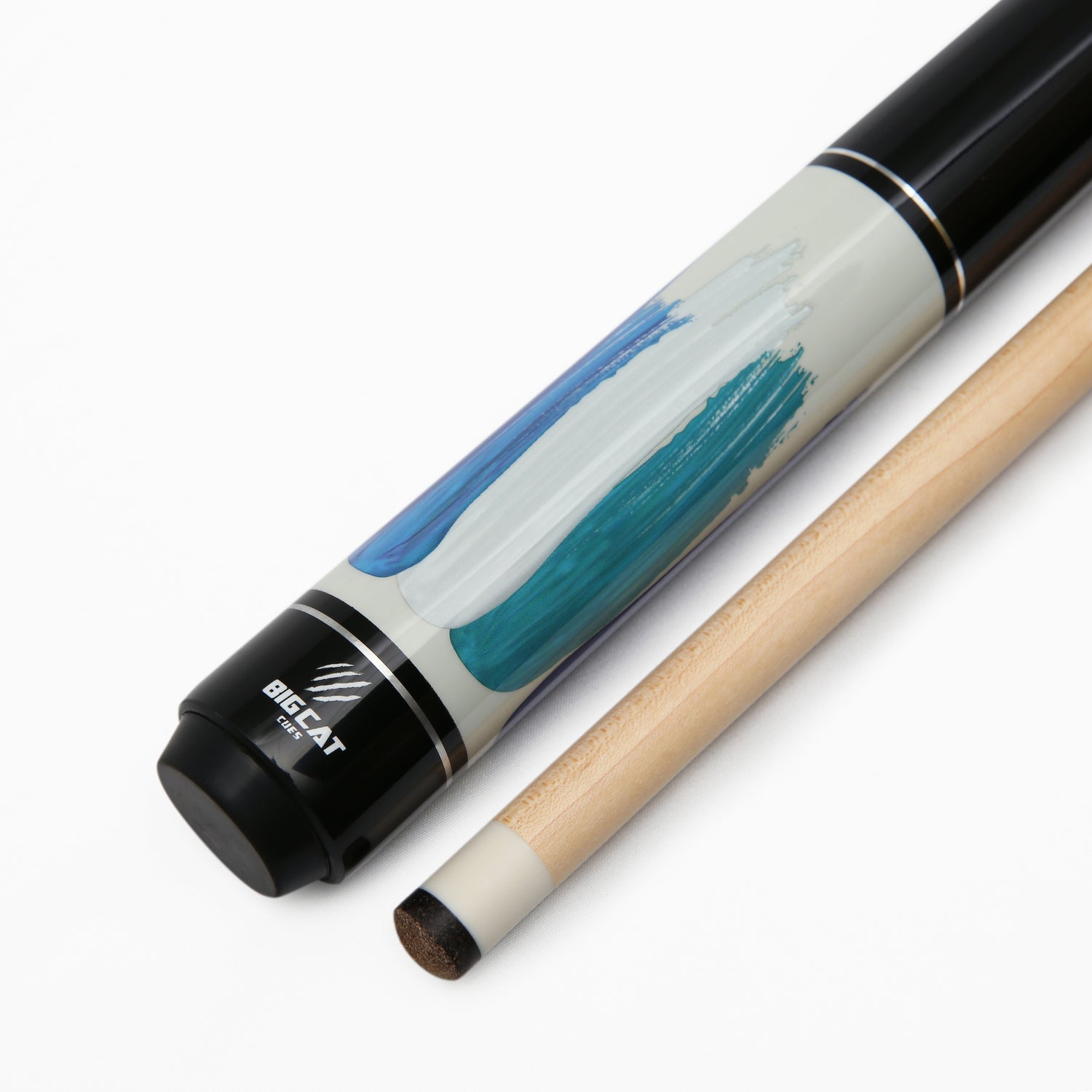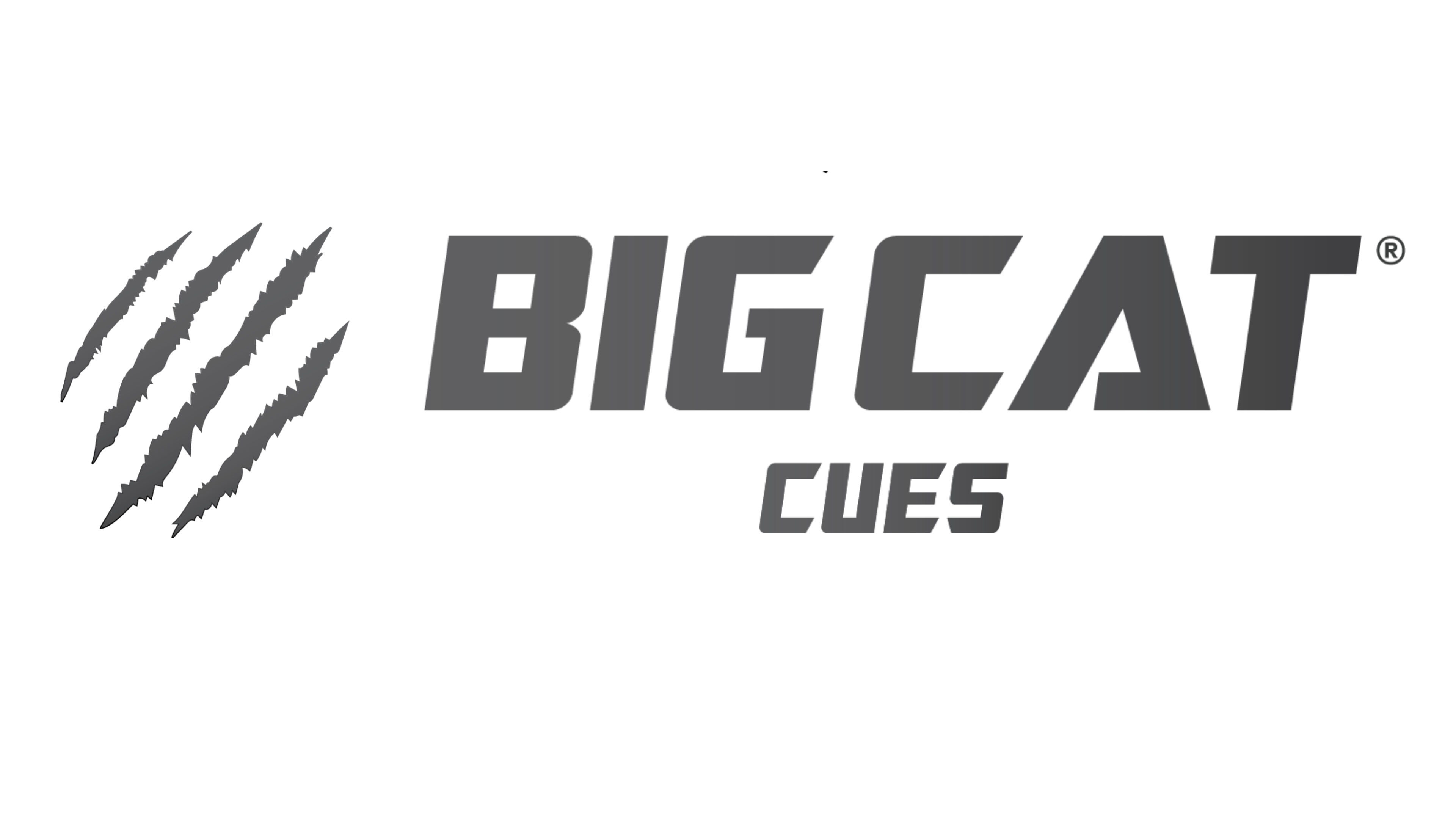
Pool Table Parts: The Complete Guide to Maximizing Your Game
Key Takeaways
- The frame ensures stability, while the slate provides a smooth playing surface. The felt influences ball speed, friction, and accuracy. Discover the roles and features of pool table parts and accessories to make informed purchasing or repair decisions.
- Check out Big Cat Cues for premium-quality pool cues and an advanced carbon fiber shaft, offering expert craftsmanship and an exceptional playing experience for both beginners and pros. Get yours today!
The Pool Table Frame
Overview of the Frame
The frame, also called the bed of a pool table, is the structural foundation and largely impacts the balance and stability of the playing surface. Choosing a sturdy, high-quality frame is essential to prevent warping or sagging, ensuring your table remains in shape and provides a consistent playing experience for years.

The frame of the pool table
Materials Used for Pool Table Frames
Frames are typically made from solid hardwood (oak, maple, or tulipwood), metal (aluminum or steel), or composite. Wood offers a classic aesthetic, while metal provides a modern, industrial look. They are lightweight yet durable.
The Playing Surface (Slate)
What is the Slate?
Slate is a solid stone primarily composed of clay, quartz, and fine-grained mica. It is widely chosen because it provides a very flat and consistent playing surface. The slate is always covered with a special felt—typically green—to provide the necessary friction for the balls to roll smoothly.

1-Piece slate
Different Types of Slate
Two common types of slate pool tables are available: 1-piece slate and 3-piece slate tables:
- 1-Piece Slate Tables: They feature a single, seamless slate surface, allowing for quick installation. However, over time, these tables can become uneven due to warping or sagging in the middle under their own weight.
- 3-Piece Slate Tables: They are constructed from three separate pieces of slate, creating a more level and balanced playing surface that resists sagging. However, minor gaps or slate residue may sometimes show through the fabric.

3-Piece slate
Professional pool tournaments use slate for its smooth, flat surface, ensuring precise ball movement. Its resistance to warping and moisture makes it more reliable than wood or synthetic materials, which can distort and affect gameplay.
Alternative Materials (MDF)
Budget pool tables often use medium-density fiberboard (MDF) as a cheaper alternative to slate. MDF is made from compressed resin and wood fibers, making it significantly more affordable while still providing a relatively smooth playing surface.
The downside to MDF is that it is less consistent, less durable, prone to scratches, and can warp if exposed to moisture.
The Felt (Cloth)
What is Pool Table Felt?
Pool table felt is a soft cloth applied to the slate surface to create a smooth, silky playing area that allows the ball to roll with ease.
The texture of the felt greatly influences the ball’s accuracy, speed, and spin. Denser, coarser felt typically slows the ball, making it more forgiving for beginners. On the other hand, smoother, less fuzzy fabrics allow for faster ball movement, which is ideal for advanced players seeking a faster-paced game.

The green felt of the pool table
Types of Pool Table Felt
In the world of pool, two types of cloth dominate the game: Worsted and Woolen Felt.
- Worsted Fabric: Though it is often called felt, it is made from fine wool using a special weave that creates a smooth, pill-resistant surface, allowing the ball to glide quickly across the table.
- Woolen Felt: It is made of at least 60% wool, has a soft, fuzzy texture, and is more affordable than the worsted. Commonly used on home and bar tables, it slows ball movement and can pill over time, affecting playability.
In general, worsted is favored for competitive play due to its speed and control, while woolen felt is more suited for relaxed, casual environments.

Worsted fabric vs. Woolen felt
Maintaining the Felt
Tips for keeping your pool table felt in top condition:
- Regular Brushing: Use a soft-bristled brush to sweep dust and chalk in straight strokes from one end to the other.
- Prevent Spills: Keep food and drinks away; use a dry cloth to blot spills immediately to avoid damage.
- Clean Chalk Residue: Wipe chalk buildup gently with a damp cloth and avoid chalking pool cues over the table.
- Cover When Not in Use: Regular Brushing: Use a soft-bristled brush to sweep dust and chalk in straight strokes from one end to the other.
- Use a Breaking Cloth: Place a small breaking cloth under the cue ball during break shots to prevent burn marks. These marks are small white spots caused by the friction of the ball rolling across the felt.
If you notice cuts, scratches, tears, or obvious signs of wear that loosen the fabric, or if balls are getting stuck in damaged areas, replace worn felt to ensure smooth gameplay and maintain your overall performance.
The Rails
What Are Rails?
Rails, also known as cushions, are the horizontal boards around the playing surface of a pool table. Made of wood or synthetic material with a rubber lining and felt covering, these parts of the table pool ensure smooth ball movement.

Most tables have six rails: four on the sides and two shorter end rails.
The quality of the rails directly impacts the “rebound power” of the table, determining how well the balls bounce off the rails and into the pockets. A strong rebound makes shots easier, while a weaker rebound increases the game's difficulty. Moreover, rails can influence ball speed—faster tables enhance the game’s pace but require more precision.
Types of Rail Cushions
The three most common rail cushion types are K-66, K-55, and U-23, each offering unique rebound and playability:

Three types of rail
K-66: Measuring 1 1/8 inches on top and 1 3/16 inches at the back with a 66-degree angle, K-66 cushions are the industry standard and the only shape approved by the Billiard Congress of America (BCA).
- Bounce and Playability: K-66 cushions provide reliable bounce and accuracy, though they may not play as fast as other shapes.
- Pros: Consistent rebound angles and compatibility with various playing styles. Found on a wide range of home and recreational tables.
- Cons: They may not offer the same level of responsiveness as other cushion types.
K-55: Slightly wider than the K-66, these cushions measure approximately 1 1/4 inches high and 1 5/16 inches at the base with a 55-degree angle.
- Bounce and Playability: Due to their different angle, K-55 cushions provide a distinct bounce, making them suitable for carom or three-cushion tables where precise ball control and rebound are key.
- Pros: Ideal for European-style tables that require more controlled play.
- Cons: Less responsive compared to K-66, making them less suited for fast-paced pool games.
U-23: They are designed for an optimal ball impact point of 1.43 inches.
- Bounce and Playability: U-23 cushions offer a more moderate bounce, suitable for casual or bar-style tables where high-speed rebounds aren’t essential.
- Pros: Provide a more relaxed and easygoing playing experience, perfect for casual players.
- Cons: Lower responsiveness and accuracy, making them less ideal for professional or competitive play.
Importance of High-Quality Rails
Rails are primarily made of natural rubber or synthetic rubber. Natural rubber is favored for its superior bounce and durability, providing predictable ball response over time. Synthetic rubber is cheaper but tends to dry out, resulting in inconsistent bounce and becoming “dead rails.” In addition, high-profile cushions, such as K66, should be prioritized to enhance rebound.
The Pockets
Pocket Types
There are two main types of pockets: drop pockets and ball return systems. Drop pockets hold the balls until the end of the game, while ball return systems automatically transport pocketed balls to a single collection area for the next round. Depending on the table's design and purpose, it may have drop pockets, a ball return system, or a combination of both.
Drop Pockets
In pool tables with drop pockets, pocketed balls stay there until the end of the frame, after which they are manually collected. Drop pockets have several advantages, especially for home or pool dining tables: they require fewer internal components, making them more affordable and less prone to clogging.

Pool table with drop pockets
Ball Return Systems
Ball return tables, commonly found in pool halls and pubs, automatically direct potted balls to a single collection pocket at one end of the table or into a coin mechanism for the next frame using tracks beneath the slate. Some tables even feature a cue ball separator, directing the cue ball to a different pocket.
Ball return systems offer convenience by eliminating the need to manually collect balls after each frame, making them ideal for quick play and easy reset.

Ball return systems inside a coin mech pool table
Pocket Liners
Pocket liners are essential pool table repair parts attached to the pockets, protecting the pocket edges from scratches, abrasions, and damage caused by balls dropping in. They also ensure smooth ball entry, enhancing gameplay flow.

Leather liners provide a classic look but wear out faster, while plastic liners are more durable and resistant to wear, often producing a satisfying sound when balls drop.
Pocket Size and its Impact on Gameplay
Most pool tables have pockets ranging from 4 ½ to 5 inches wide, while a standard pool ball is two ¼ inches in diameter, making the pocket at least twice the size of the ball.
"Loose" pockets, found on beginner and intermediate tables, simplify sinking balls, while "Tight" pockets, used in professional tournaments, are only slightly larger than the ball, demanding precise shots for scoring.
The Pool Table Legs
Importance of Stable Legs
The cabinet of a pool table supports 90% of its total weight, and when players make shots, lean or sit on the table, it adds even more pressure. That’s why pool tables need sturdy legs to ensure stability and balance during play.

Adjustable legs vs. fixed legs
Adjustable vs. Fixed Legs
Pool tables feature adjustable legs with feet that you can rotate clockwise or counterclockwise to adjust the height. Fixed legs, usually made from solid pieces of wood extending from the slate down to the feet, are reliable and help maintain the quality of the gaming experience over time.
Materials and Design of Table Legs
Pool table legs can be constructed from solid hardwood, aluminum alloy, or a wood-metal combination. Solid hardwoods like oak or mahogany are favored for their stability, durability, and aesthetic appeal, while aluminum alloy provides benefits in lightweight finish.
The leg material must complement the tabletop; for heavier slate tops, solid hardwood or a wood-metal combination is typically needed for optimal support.
Leveling the Table
To ensure the playing surface is perfectly level:
- Use a spirit level to identify uneven areas.
- Turn the adjusting leg screws on the respective legs to raise or lower them until the table is level across the entire playing surface, checking lengthwise and widthwise with the spirit level.
- Adjust the outer legs first, then move to the middle legs once the table is almost level.

The Cushions
What Are Pool Table Cushions?
Pool Table Cushions are long, wedge-shaped pieces of hard rubber or foam that are glued to the side of the rail facing the playing surface. Cushions are covered with the same felt used to cover the slate.
Pool table cushions serve as the rebound surface for the balls. When a ball hits the cushions, it bounces off, continuing its journey across the felt. A high-quality cushion provides a consistent bounce, allowing you to predict and control your shots.

Cushions of the pool table
Cushion Material
Rail cushions primarily serve to rebound balls while maintaining their kinetic energy. They are made from vulcanized rubber, similar to tire material. If the rubber deteriorates—becoming hard and cracked or soft and doughy—the quality of the bounce declines, affecting both the distance the ball travels and its rebound angle off the cushion.
The Slate Liner
Role of the Slate Liner
Slate liners are protective layers attached to the cabinet, providing cushioning between the slate and the frame. They absorb impact and prevent the slate from directly contacting the frame, which can lead to scratches or chips during transport and regular use.
These parts of a pool table also enhance the table's stability by ensuring a flat surface for the slate, helping maintain the table's shape and balance.
Common Slate Liner Materials
Common slate liner materials include wood and medium-density fiberboard (MDF).
- Wood Slate Liners: They are strong and durable, providing excellent support and sound absorption for quieter gameplay.
- MDF Slate Liners: They are cheaper but less durable and more prone to moisture damage. However, they effectively dampen sound, reducing noise during play.
Additional Accessories and Parts
Ball Rack
A rack is used to position balls in their starting places before each pool game, giving both players an equal chance to break effectively. The shape of the rack varies by game: a triangular rack is used for an eight-ball, straight pool, one-pocket, and bank pool, while a diamond rack is typically used for a nine-ball.

Triangle rack vs. diamond rack
Cue Rack
A cue rack securely stores cues, preventing warping from sunlight and damage from table placement while keeping the game room tidy and organized.
Cue racks are available in two main types: wall-mounted and floor-standing. Compact wall-mounted racks can hold up to six cues, making them perfect for smaller spaces. Floor stands can accommodate cues, balls, and triangles and come in various wood finishes for an elegant touch.

Wall-mounted cue rack vs. floor-standing cue rack
Table Cover
A table cover protects pool tables from dust, spills, and debris that can damage the felt and overall integrity. By covering the table, you can reduce the need for pool table replacement parts and minimize cleaning time.
Vinyl table covers are waterproof and easy to clean, while leather covers offer elegance but require more care. Fitted covers snugly conform to the table's shape, while loose covers can be easily thrown on and removed for convenience.

Vinyl table pool cover
Pool Table Lighting
Why Lighting Matters
Well-distributed lighting minimizes shadows and glare, helping you maintain focus and concentration. With better visibility, you'll be able to judge angles and distances more accurately, resulting in more precise shot execution.

Hanging lamps vs. LED bars
Types of Pool Table Lights
Popular lighting styles include hanging lamps and LED bars, each offering unique advantages.
- Hanging Lamps: These lights hang directly above the pool table, providing focused illumination for the playing surface while adding a classic touch to the room.
- LED Bars: These slim lights can be hung from the ceiling above a table. With adjustable brightness and customizable colors, they offer the flexibility to create a suitable atmosphere for any occasion.
Positioning the Lights
Your lamp should hang low enough to illuminate the entire table clearly yet high enough to avoid interfering with high or jumping shots. A general guideline is to position the bottom edge of the lampshade approximately 31 to 33 inches above the playing surface.


